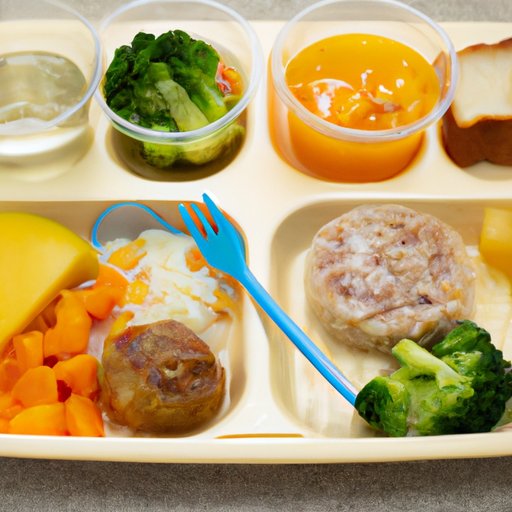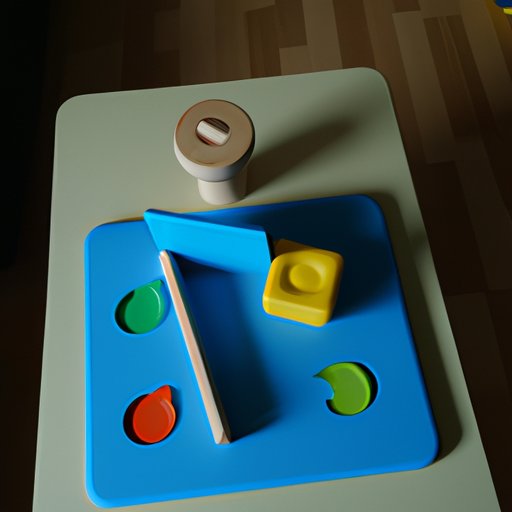Introduction
Does your dog inhale their food? Eating too quickly is a common problem for many dogs, but it’s important to help them slow down. Eating too fast can lead to bloating, indigestion, and other health issues. Here are some tips and tricks to help you get your pup to eat at a healthier pace.
Use a Puzzle Feeder or Slow-Feed Bowl
One of the best ways to get your pup to eat slower is to use a puzzle feeder or slow-feed bowl. These tools are designed to make it harder for your pup to access their food, forcing them to take more time to eat. This can help reduce the risk of bloating and indigestion, as well as help your pup become more mindful when they’re eating.
Advantages of Using Slow-Feed Bowls
Slow-feed bowls are a great way to help your pup eat slower. These bowls are designed with ridges, mazes, and other obstacles that make it harder for your pup to access their food. This encourages them to take their time and eat at a slower pace. Slow-feed bowls also help prevent overeating and encourage your pup to be more mindful when they’re eating.
Examples of Slow-Feed Bowls
There are many different types of slow-feed bowls on the market. Some of the most popular options include the Trixie Slow Feed Bowl, the Outward Hound Fun Feeder, and the Northmate Green Interactive Feeder. These bowls all have different features, so it’s important to do your research and find the one that’s right for your pup.

Break Meals into Smaller Portions and Spread Them Out
Another way to get your pup to eat slower is to break their meals into smaller portions and spread them out throughout the day. This will help your pup take their time and savor each bite. Plus, it can help keep them from getting bored with their food.
Benefits of Smaller Meals
Breaking meals into smaller portions has several benefits. For one, it can help your pup eat slower and be more mindful when they’re eating. It can also help prevent overeating and keep your pup from getting bored with their food. Additionally, smaller meals can help regulate your pup’s blood sugar and energy levels throughout the day.
Tips for Portioning Out Meals
When portioning out your pup’s meals, it’s important to follow the instructions on the food packaging. You should also consider your pup’s age, size, and activity level when deciding how much food to give them. If you’re still unsure, you can always consult your veterinarian for advice.

Make Mealtimes Interactive with Training Games
Making mealtimes interactive with training games can also help get your pup to eat slower. These games can help keep your pup engaged and focused on their food, which can help them take their time and savor each bite.
Overview of Training Games
Training games are a fun and interactive way to get your pup to eat slower. These games involve hiding pieces of food around the house or in a puzzle feeder and having your pup search for them. This helps keep your pup engaged and focused on their food, which can help them take their time and savor each bite.
Examples of Training Games
There are many different types of training games you can play with your pup. Some examples include hide-and-seek, seek-and-find, and fetch. You can also create your own game by hiding pieces of food around the house or in a puzzle feeder and having your pup search for them. Just make sure to supervise your pup during the game to ensure they don’t get too carried away.
Add Healthy, Low-Calorie Treats to Meals
Adding healthy, low-calorie treats to your pup’s meals can also help them eat slower. This can help keep your pup engaged and focused on their food, which can help them take their time and savor each bite.
Benefits of Adding Treats to Meals
Adding treats to your pup’s meals has several benefits. For one, it can help keep your pup engaged and focused on their food. It can also help keep them from getting bored with their food. Additionally, treats can provide extra nutrition and vitamins to your pup’s diet.
Examples of Healthy Treats
When choosing treats for your pup, it’s important to pick ones that are healthy and low in calories. Some examples of healthy treats include freeze-dried liver, dehydrated sweet potatoes, and air-popped popcorn. You can also make your own treats at home using ingredients like apples, carrots, and oats.
Regularly Exercise Your Dog Before Mealtime
Exercising your pup before mealtime can also help get them to eat slower. Exercise can help tire out your pup and make them less likely to wolf down their food. Plus, it can help keep them from getting bored with their food.
Benefits of Exercising Before Mealtimes
Exercising your pup before mealtimes has several benefits. For one, it can help tire out your pup and make them less likely to wolf down their food. Additionally, it can help keep your pup from getting bored with their food. Plus, regular exercise can help maintain your pup’s overall health and wellbeing.
Examples of Exercises
There are many different types of exercises you can do with your pup. Some examples include walking, jogging, playing fetch, and swimming. You can also try activities like agility training or dog sports. Just make sure to start off slowly and gradually increase the intensity of the exercises over time.
Conclusion
Eating too quickly can lead to health problems for your pup, so it’s important to help them slow down. There are several ways to get your pup to eat slower, including using a puzzle feeder or slow-feed bowl, breaking meals into smaller portions and spreading them out, making mealtimes interactive with training games, adding healthy, low-calorie treats to meals, and regularly exercising your pup before mealtime. With the right strategies, you can help your pup learn to eat slower and be more mindful when they’re eating.
(Note: Is this article not meeting your expectations? Do you have knowledge or insights to share? Unlock new opportunities and expand your reach by joining our authors team. Click Registration to join us and share your expertise with our readers.)
